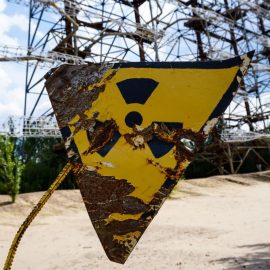
This is a free excerpt from one of Shortform’s Articles. We give you all the important information you need to know about current events and more.
Don't miss out on the whole story. Sign up for a free trial here .
What does the future of fusion energy look like? What are the main benefits and challenges associated with it?
Fusion energy, once seen as wishful thinking, is gaining renewed attention due to recent advancements, potentially offering an abundant, eco-friendly power source. Private companies are pouring billions into fusion startups racing to make commercial reactors a reality within a decade.
Continue reading to learn what fusion energy is and how it might be used in the future.
Once dismissed as a pipe dream, fusion energy is staging a comeback, thanks to recent breakthroughs that have breathed new life into the field. Here’s a look at the future of fusion energy.
Background
Fusion energy is a potential source of power created through the process of merging atomic nuclei to release a significant amount of energy, similar to the process that powers the sun and stars. Some believe the energy source could provide a nearly limitless supply of carbon-free power and mitigate the impacts of climate change.
Fusion Energy Benefits
In addition to not producing greenhouse gasses or long-lived radioactive waste, fusion energy offers several key benefits:
- Abundant and sustainable fuel sources.
- A reliable and continuous energy supply.
- Enhanced nuclear safety.
- Global energy security.
Fusion Energy Expansion Challenges
While fusion energy holds great promise, it’s not without challenges, including:
- Its long-unrealized potential. To date, no fusion company has successfully produced consistent self-sustaining energy output from fusion reactions that exceeds the energy invested.
- Difficulty containing and controlling fusion reactions’ extreme heat and instability.
- Tritium supply and characteristics. Tritium, a resource used in older methods of fusion energy production, is expensive, scarce, and radioactive.
- Radioactive waste. Debate surrounds the radioactivity of tritium. Some say that the waste product of tritium may require secure storage and disposal. Others contend that because tritium is used in small quantities and has a short half-life, it doesn’t pose serious dangers.
Fusion Research and Investments
Coupled with the challenges faced by fusion energy expansion, several notable breakthroughs and research initiatives are shaping the future of fusion technology, including:
- The recent launch of the world’s newest and largest state-of-the-art fusion reactor in Japan.
- Last year, the National Ignition Facility (NIF) produced, for the first time, a nuclear fusion reaction that generated more energy than was initially invested.
- The International Thermonuclear Experimental Reactor (ITER), which is under construction and anticipated to (a) become the epicenter of fusion research starting in 2035, and (b) aid in the development of other fusion power reactors.
Some hope that new technological advancements and additional research investments will turn commercial fusion power into a reality sooner than anticipated:
- In recent years, private venture capital has poured close to $6 billion into fusion energy startups.
- Tech moguls, including Bill Gates and Sam Altman, are also investing in fusion.
- Over 40 different fusion energy companies are pursuing innovative reactor designs and concepts.
Looking Ahead
It remains to be seen whether ambitious startups, backed by investors and breakthrough technologies, can defy mainstream projections that put fusion-generated electricity two decades away and whether they can build commercial plants to power US cities and homes within the next 10 years.

Want to fast-track your learning? With Shortform, you’ll gain insights you won't find anywhere else .
Here's what you’ll get when you sign up for Shortform :
- Complicated ideas explained in simple and concise ways
- Smart analysis that connects what you’re reading to other key concepts
- Writing with zero fluff because we know how important your time is






